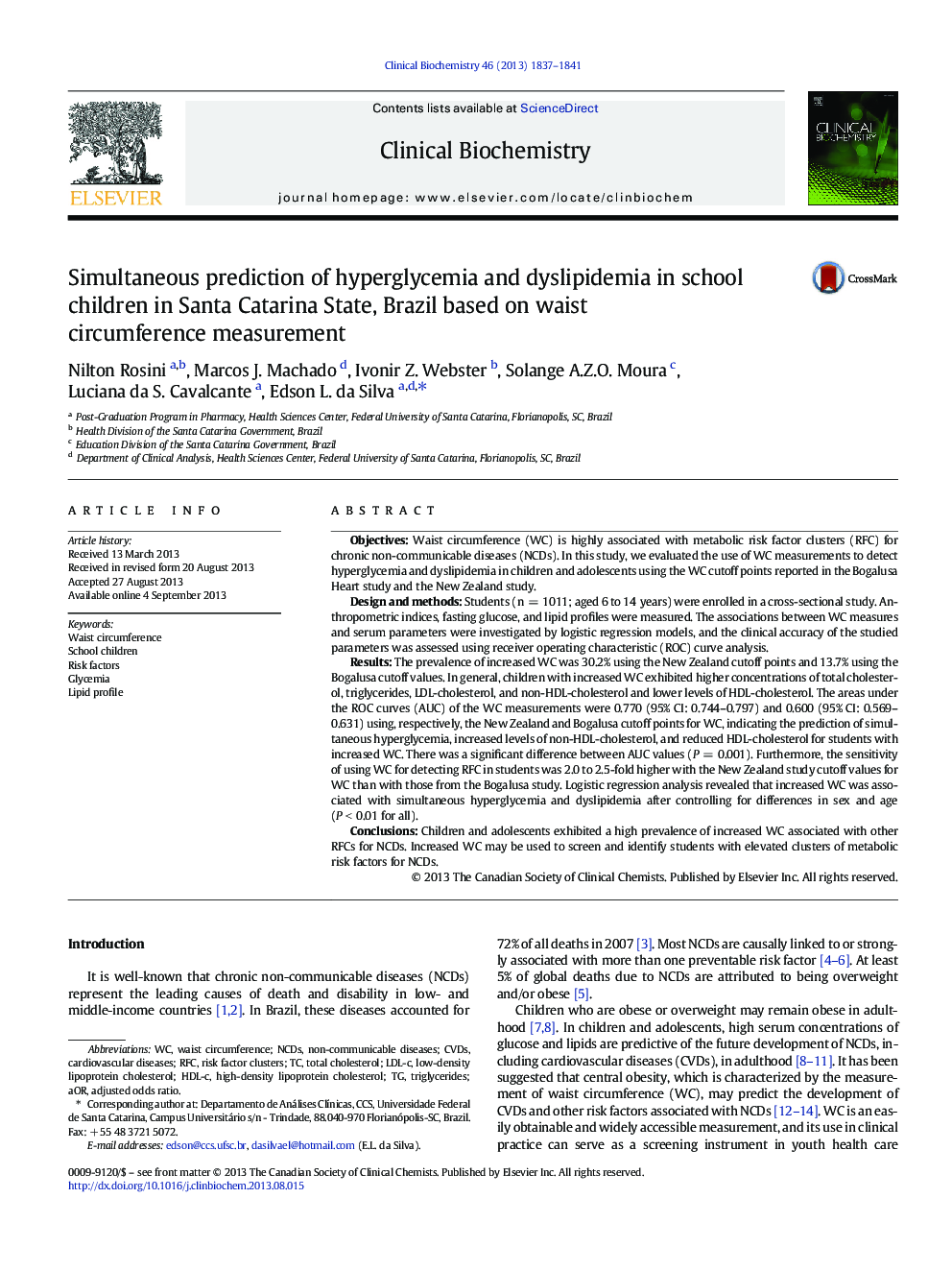| کد مقاله | کد نشریه | سال انتشار | مقاله انگلیسی | نسخه تمام متن |
|---|---|---|---|---|
| 1968658 | 1059737 | 2013 | 5 صفحه PDF | دانلود رایگان |

• Waist circumference measurement was used to detect hyperglycemia and dyslipidemias in children.
• Children and adolescents had a high prevalence of increased waist circumference (WC).
• Children with increased WC showed higher levels of glucose and lipids.
• Increased WC was associated with simultaneous hyperglycemia and dyslipidemias.
• Increased WC may be used to screen students with elevated risk factor clusters.
ObjectivesWaist circumference (WC) is highly associated with metabolic risk factor clusters (RFC) for chronic non-communicable diseases (NCDs). In this study, we evaluated the use of WC measurements to detect hyperglycemia and dyslipidemia in children and adolescents using the WC cutoff points reported in the Bogalusa Heart study and the New Zealand study.Design and methodsStudents (n = 1011; aged 6 to 14 years) were enrolled in a cross-sectional study. Anthropometric indices, fasting glucose, and lipid profiles were measured. The associations between WC measures and serum parameters were investigated by logistic regression models, and the clinical accuracy of the studied parameters was assessed using receiver operating characteristic (ROC) curve analysis.ResultsThe prevalence of increased WC was 30.2% using the New Zealand cutoff points and 13.7% using the Bogalusa cutoff values. In general, children with increased WC exhibited higher concentrations of total cholesterol, triglycerides, LDL-cholesterol, and non-HDL-cholesterol and lower levels of HDL-cholesterol. The areas under the ROC curves (AUC) of the WC measurements were 0.770 (95% CI: 0.744–0.797) and 0.600 (95% CI: 0.569–0.631) using, respectively, the New Zealand and Bogalusa cutoff points for WC, indicating the prediction of simultaneous hyperglycemia, increased levels of non-HDL-cholesterol, and reduced HDL-cholesterol for students with increased WC. There was a significant difference between AUC values (P = 0.001). Furthermore, the sensitivity of using WC for detecting RFC in students was 2.0 to 2.5-fold higher with the New Zealand study cutoff values for WC than with those from the Bogalusa study. Logistic regression analysis revealed that increased WC was associated with simultaneous hyperglycemia and dyslipidemia after controlling for differences in sex and age (P < 0.01 for all).ConclusionsChildren and adolescents exhibited a high prevalence of increased WC associated with other RFCs for NCDs. Increased WC may be used to screen and identify students with elevated clusters of metabolic risk factors for NCDs.
Journal: Clinical Biochemistry - Volume 46, Issue 18, December 2013, Pages 1837–1841